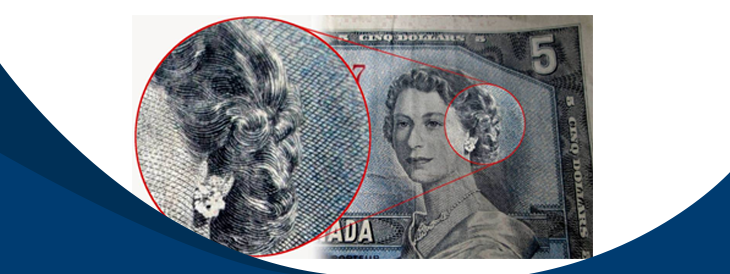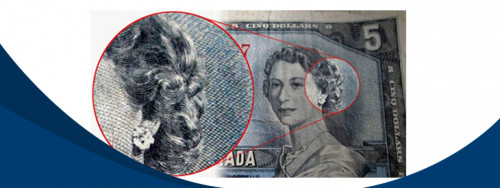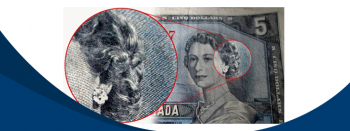Last updated on May 2nd, 2024 at 03:35 pm
Last Updated on May 2, 2024 Posted by Colonial Acres Coins
The devils in the detail they say, or perhaps the detail is the devil in the case of the 1954 Canadian paper money series.
In the early 1950s, the Canadian government decided to print a new series of paper money bills for the country. This series of eight banknotes displaying Canadian landscapes were introduced in 1954 and was created to replace the notes featuring King George VI that dated back to 1937. The new notes were supposed to be a fresh start for the country and symbols of British dominion were deliberately removed and replaced with symbols representing Canada’s spirit of national pride. The face of the new young British Queen, Elizabeth II, however, was prominently displayed and it was not the depictions of breath-taking Canadian landscapes on the eight different denominations of banknotes that got the nation talking, but rather the devil hiding in the queen’s curls.
In 1952 the Bank of Canada began the process of redesigning its bank notes and the respected Canadian painter and war artist Charles Comfort was given the job of creating a unifying contemporary design that removed all the colonial clutter and traditional Victorian ornamentation of the 1937 paper money series.
Design Decisions and Considerations
It was decided that the back of each banknote would feature a Canadian landscape and the eight images that were ultimately chosen, from the over 3000 that were considered, became known as The Great Lone Land Vision of Canada. There were two important considerations that had to be taken into account when designing the bills, the first was that legally the writing on the notes had to be both English and French, the two official languages of Canada. The other consideration was where to position the Queen’s portrait to avoid it being folded when the notes were placed in a wallet or billfold. It was decided that the Queen’s portrait would be placed on the right-hand side of all the notes. Interestingly, the 1954 paper money series is the only one where all eight dominations of the bank notes feature the Queen’s portrait.
The image of Queen Elizabeth II was adapted from a carefully chosen photograph taken by the famous Canadian photographer Yousuf Karsh. The photo needed to be touched up to remove the tiara that the Queen was wearing but once this work was done, the image was approved by the Queen and engraved by George Gunderson, one of the best engravers working for the British American Bank Note Company.
The Devil in the Details
The new Canadian paper money series was introduced in 1954 amid great fanfare. The Bank of Canada published an advert in newspapers around the country in September 1954 encouraging people to study the details of the new notes carefully to familiarize themselves with its general appearance. But it wasn’t in Canada that one observant person noticed the devil in the details.
The devil’s head controversy was kicked off by a British alderman, H.L. Hogg of Hartlepool in England. After carefully studying the new Canadian paper money, Mr. Hogg wro
To avoid embarrassment and a possible international controversy the Bank of Canada quickly redesigned the offending portrait of the Queen by darkening the hair behind her ear and eliminating any devilish overtones. The banknote printing plates were modified in late 1955 and all Canadian paper money printed after that date was devil free.




